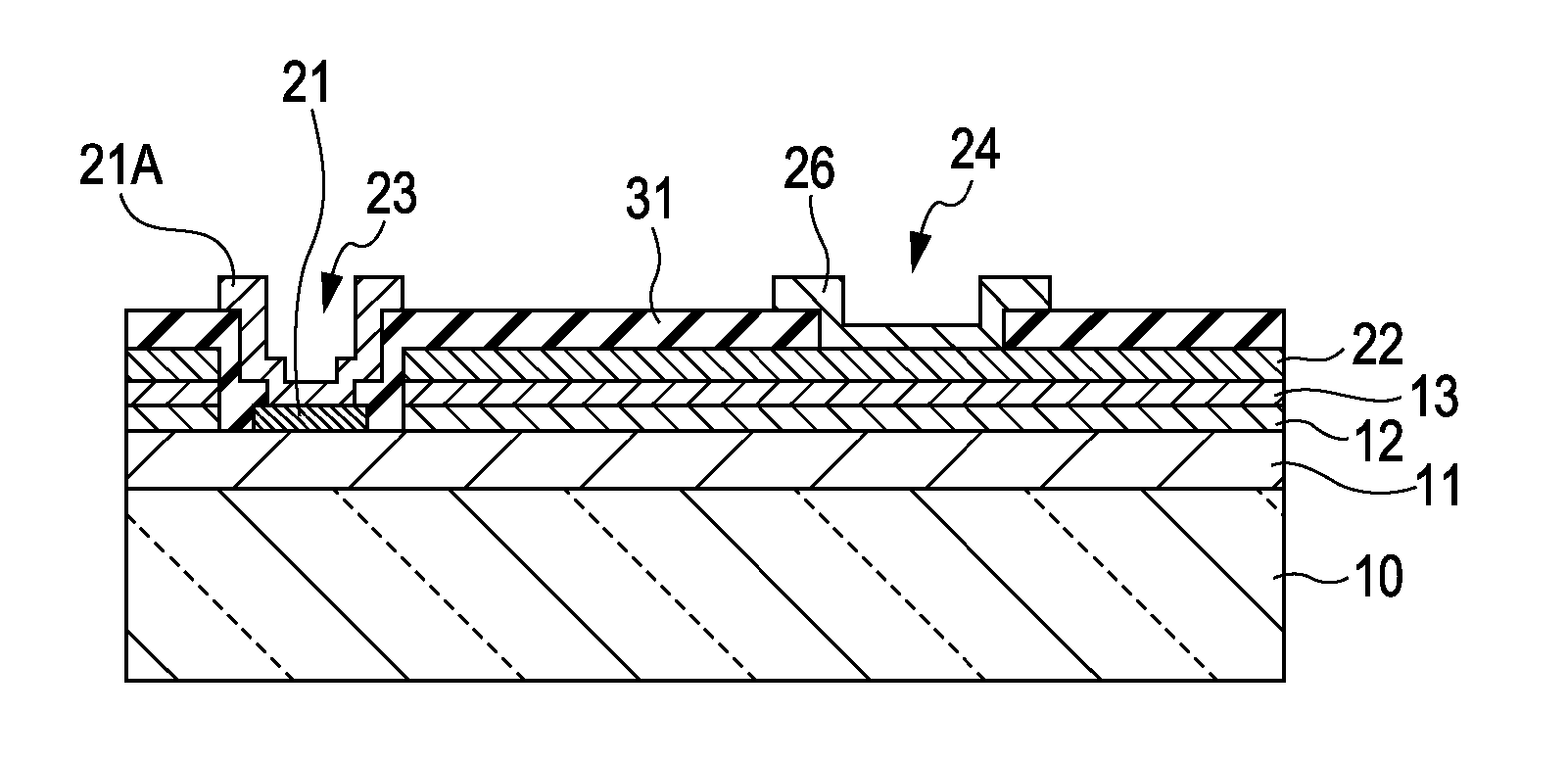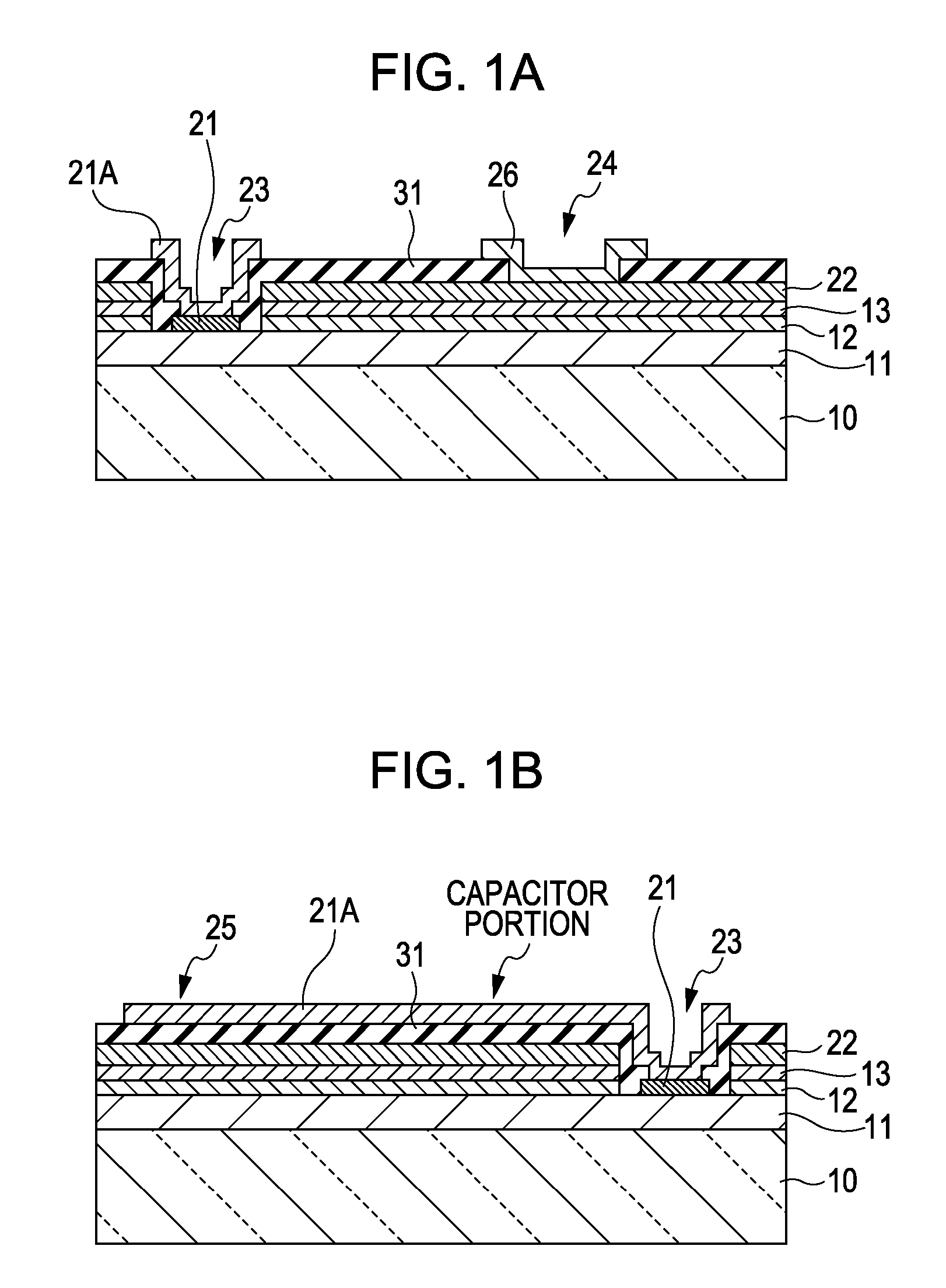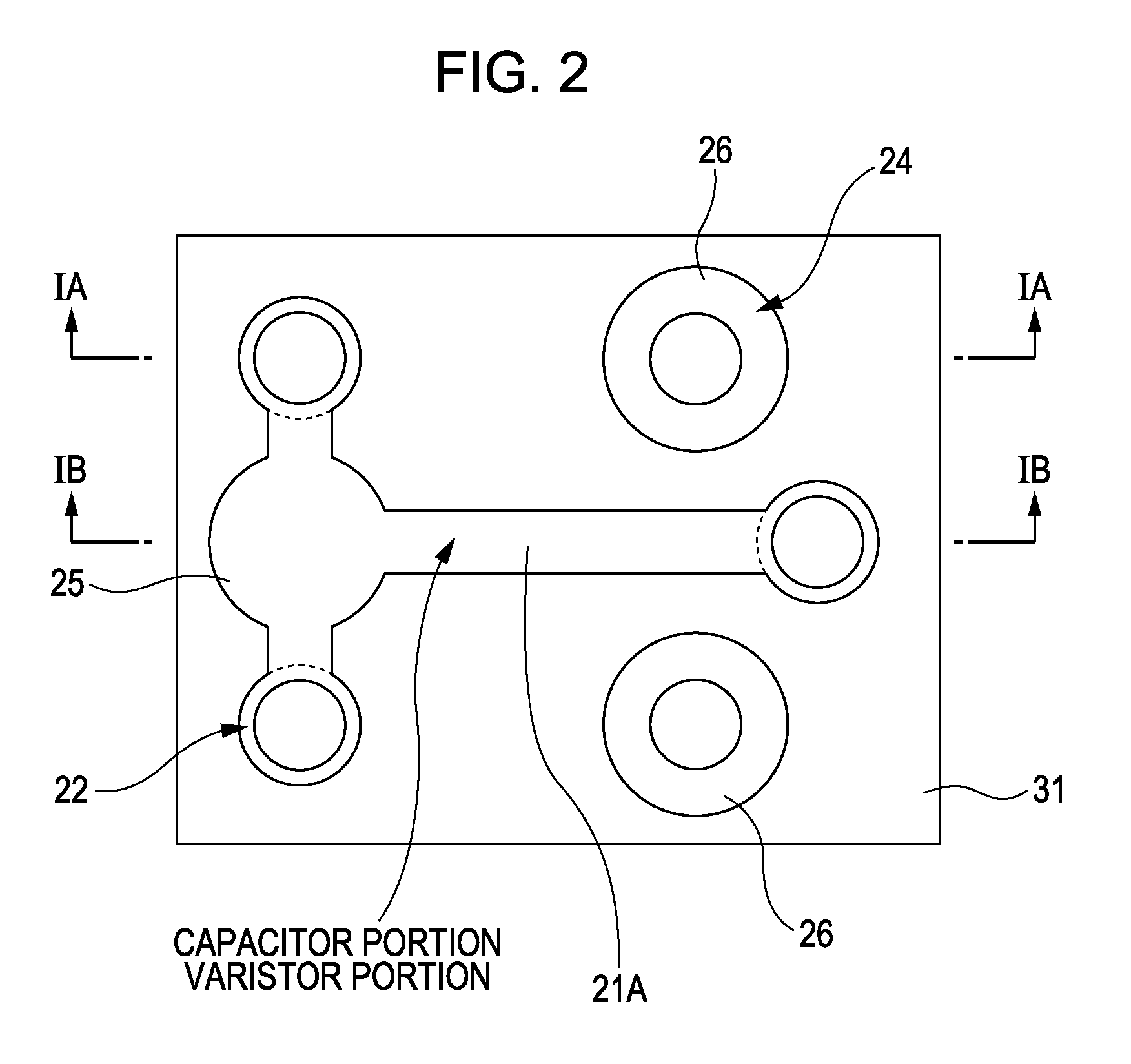Light-emitting device
a technology of light-emitting devices and active layers, which is applied in the direction of semiconductor devices, basic electric elements, electrical apparatus, etc., can solve the problems of many displacements, easy to affect the active layer (luminescent layer), and become electrically and mechanically vulnerable, so as to minimize the first electrode, maximize the luminescent area, and stabilize the mounting properties
- Summary
- Abstract
- Description
- Claims
- Application Information
AI Technical Summary
Benefits of technology
Problems solved by technology
Method used
Image
Examples
first embodiment
[0053] A first embodiment of the present invention relates to a light-emitting device. The light-emitting device according to the first embodiment includes a light-emitting diode including a GaN compound semiconductor layer. FIG. 2 is a schematic plan view, and FIGS. 1A and 1B are schematic end views taken along arrows IA-IA and IB-IB, respectively, in FIG. 2. As shown in the drawings, the light-emitting device includes the following:
[0054] (A) a first compound semiconductor layer 11 of a first conductivity type (in this embodiment, n-type), an active layer 12 having a quantum well structure, and a second compound semiconductor layer 13 of a second conductivity type (in this embodiment, p-type) different from the first conductivity type;
[0055] (B) a second electrode 22 formed on the second compound semiconductor layer 13 (specifically, over the substantially entire top surface of the second compound semiconductor layer 13);
[0056] (C) an insulating layer 31 covering the second ele...
second embodiment
[0090] The second embodiment is a modification of the first embodiment. In the first embodiment, the insulating layer 31 includes a layer made of the same material. However, in the second embodiment, as shown in FIGS. 8A and 8B which are schematic end views taken along the same arrows as IA-IA and IB-IB in FIG. 2, respectively, the insulating layer includes a first portion 41 provided between a portion of the first electrode extension 21A disposed on the insulating layer and the second electrode 22, and a second portion 42 provided in the other region.
[0091] The first portion 41 of the insulating layer is composed of barium titanate (BaTiO3) like the insulating layer 31 of the first embodiment, while the second portion 42 of the insulating layer is composed of a SOG layer. The first portion 41 of the insulating layer is provided in a portion shadowed in FIG. 2.
[0092] In a usual technique, pinholes or cracks easily occur in an insulating film 114 formed on the basis of the CVD or P...
third embodiment
[0108] The third embodiment is a modification of the second embodiment. In the second embodiment, the first portion 41 of the insulating layer is composed of a barium titanate layer which is a high-dielectric material so that the portion of the first electrode extension 21A which is positioned on the insulating layer, the first portion 41 of the insulating layer, and the second electrode 22 form a capacitor portion. On the other hand, in the third embodiment, as shown in FIGS. 9A and 9B which are schematic end views taken along the same arrows as IA-IA and IB-IB in FIG. 2 and FIG. 12B which is a drawing of an equivalent circuit, a first portion 51 of the insulating layer is composed of a semiconductor ceramic layer, specifically strontium titanate (SrTiO3) so that the portion of the first electrode extension 21A which is positioned on the insulating layer, the first portion 51 of the insulating layer, and the second electrode 22 form a varistor portion.
[0109] Except the above-descr...
PUM
 Login to View More
Login to View More Abstract
Description
Claims
Application Information
 Login to View More
Login to View More - R&D
- Intellectual Property
- Life Sciences
- Materials
- Tech Scout
- Unparalleled Data Quality
- Higher Quality Content
- 60% Fewer Hallucinations
Browse by: Latest US Patents, China's latest patents, Technical Efficacy Thesaurus, Application Domain, Technology Topic, Popular Technical Reports.
© 2025 PatSnap. All rights reserved.Legal|Privacy policy|Modern Slavery Act Transparency Statement|Sitemap|About US| Contact US: help@patsnap.com



